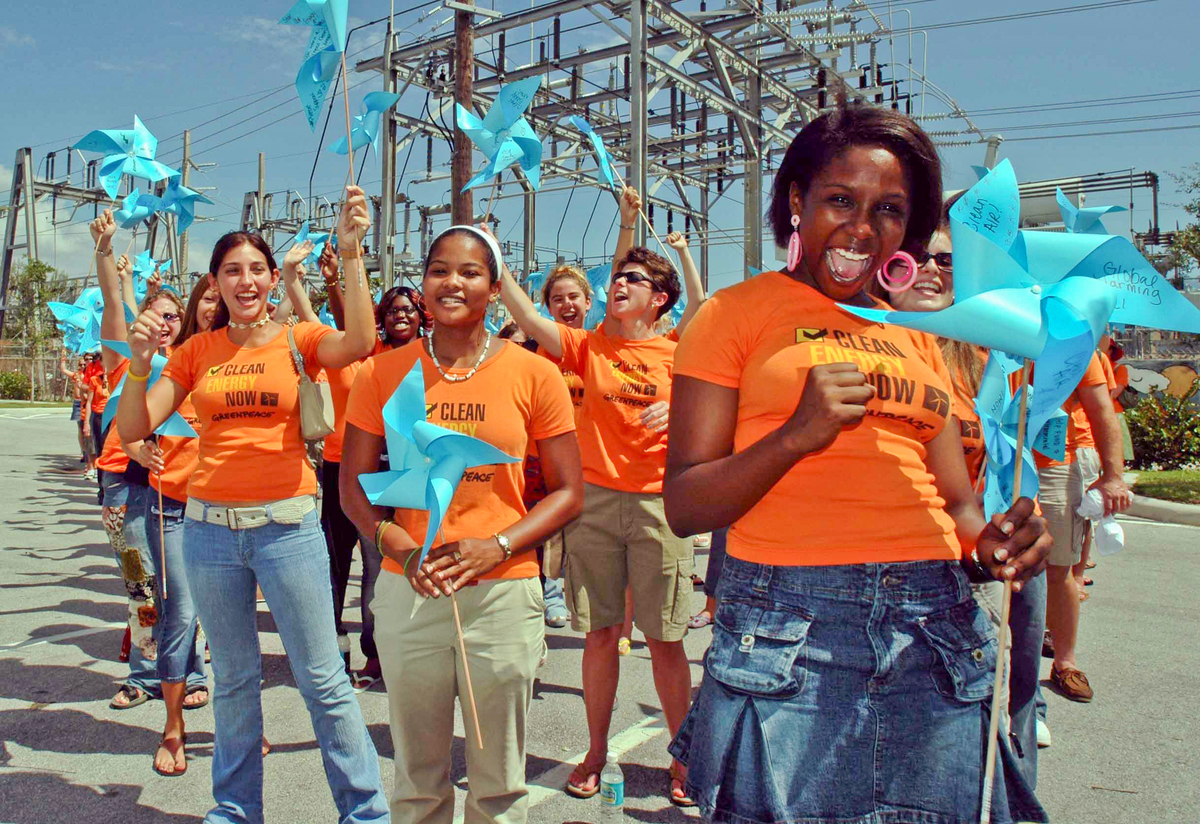Our Story
In 1971, motivated by their vision for a more green and peaceful world, a crew of twelve planned to set sail from Vancouver, British Columbia, in an old fishing boat. These activists believed a few individuals could make a difference. Their mission? To ‘bear witness’ to the US testing nuclear bombs off Amchitka island, Alaska, and prevent a test going ahead.

To raise money for the mission, Joni Mitchell, Phil Ochs and James Taylor played a benefit concert that 16,000 people attended at Vancouver’s Pacific Coliseum. Heartened by the support, the crew decided to name the old fishing boat Green Peace. When the two words didn’t fit onto pin buttons, they were simply merged: Green Peace became Greenpeace.
The vessel never made it to Amchitka, and the bomb test went ahead, but it would be the last in the area for the US. The trip had successfully turned public opinion, and Greenpeace’s mission had captured the hearts and minds of people across Canada. In the coming months, this same vision would spread across the globe, and a movement would be born.
Today, Greenpeace is the world’s most visible environmental organization, with presence in more than 55 countries and millions of supporters worldwide. Amchitka, it has turned out, was only the beginning of what would come to be a much bigger story.
Here are just a few of Greenpeace’s successes since 1971
1972: After the first Greenpeace action in 1971, the U.S. abandons nuclear testing grounds at Amchitka Island, Alaska.
1982: After at sea actions against industrial whalers, a whaling moratorium is adopted by the International Whaling Commission
1991: After lobbying by Greenpeace and other organizations, the 39 Antarctic Treaty signatories agree to a 50-year ban of mineral exploitation on the continent.
2011: After the release of Greenpeace’s Dirty Laundry report, major clothing brands committed to eliminating discharges of hazardous chemicals from their supply chains and products within 10 years.
2016: After decades of campaign work, 85% of the forested area of the Great Bear Rainforest in B.C. is protected from industrial logging.
2016: After three years of tireless legal action, Clyde River Inuit – with the support of Greenpeace Canada – stopped seismic blasting – a dangerous oil exploration project that threatens the Canadian Arctic.
2017: After more than five years of campaigning by Greenpeace, community groups, allies and environmental organizations, TransCanada cancels the Energy East tar sands pipeline.
2019: Greenpeace Canada provided organizational and material support to the student strike movement, which mushroomed in growth and presence, culminating in over 750,000 people across Canada.
2020: The company behind the proposed Teck Frontier tar sands mine decided to withdraw its application on February 25, just before the federal cabinet’s decision day. Through years of monitoring, Greenpeace, alongside our allies like Indigenous Climate Action, managed to push this project to the top of the public and media agenda, turning it into a litmus test of the newly elected Trudeau government’s commitment to addressing the climate crisis.
2021 – The Quebec government rejects the GNL project, which would have seen a new pipeline built through natural gas to Quebec for export by ship. Greenpeace organized thousands of our supporters, undertook direct action, and commissioned research to show the project would only accelerate climate change.
2022: Greenpeace Canada stood with Inuit hunters against the Baffinland mine expansion, which jeopardized the delicate Arctic ecosystem and the livelihoods of indigenous communities. With the government’s refusal to expand, the Arctic and its people are safe from this threat—a significant victory.
2023: The Global Ocean Treaty has been agreed upon, marking a historic milestone. It sets the stage for establishing a network of ocean sanctuaries on the high seas and offers a more sustainable and fair approach to governing the oceans. Greenpeace Canada has been campaigning on this global initiative, advocating for a robust treaty and urging the federal government to commit to protecting 30% of the oceans by 2030.
For many more, view the interactive timeline of Greenpeace’s history, victories and successes.
